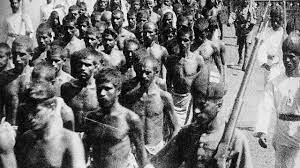Removal Of 1921 Malabar Rebellion Martyrs From The List Of India’s Freedom Fighters:

The Indian Council for Historical Research (ICHR) has deferred its decision on a recommendation to remove the 1921 Malabar Rebellion martyrs, including Variamkunnaathu Kunhahamad Haji and Ali Musliyar, from the list of India’s freedom fighters.
- The panel was of the view that the rebellion that took place at Malabar was a one-sided attack on Hindus. Just two Britishers were killed during the unrest and hence the rebellion could not be considered as part of the freedom struggle.
- The subcommittee had recommended the removal of the Malabar Rebellion leaders, mostly Muslims, from the list. This is viewed by some as an attempt to distort history.
- The Mapilla rebellion or Moplah Rebellion (Moplah Riots) of 1921 was the culmination of a series of riots by Moplahs (Muslims of Malabar) in the 19th and early 20th centuries against the British and the Hindu landlords in Malabar (Northern Kerala).
- The year 2021 will mark the 100th year anniversary of the uprising.
- The resistance which started against the British colonial rule and the feudal system later ended in communal violence between Hindus and Muslims.
- Gandhiji along with Shaukat Ali, the leader of the Khilafat movement in India, visited Calicut in August 1920 to spread the combined message of non-cooperation and Khilafat among the residents of Malabar.
- In response to Gandhiji’s call, a Khilafat committee was formed in Malabar and the Mappilas, under their religious head Mahadum Tangal of Ponnani who pledged support to the non-cooperation movement.
- Most of tenants’ grievances were related to the security of tenure, high rents, renewal fees and other unfair exactions of the landlords.
- The British government responded with much aggression, bringing in Gurkha regiments to suppress it and imposing martial law.




